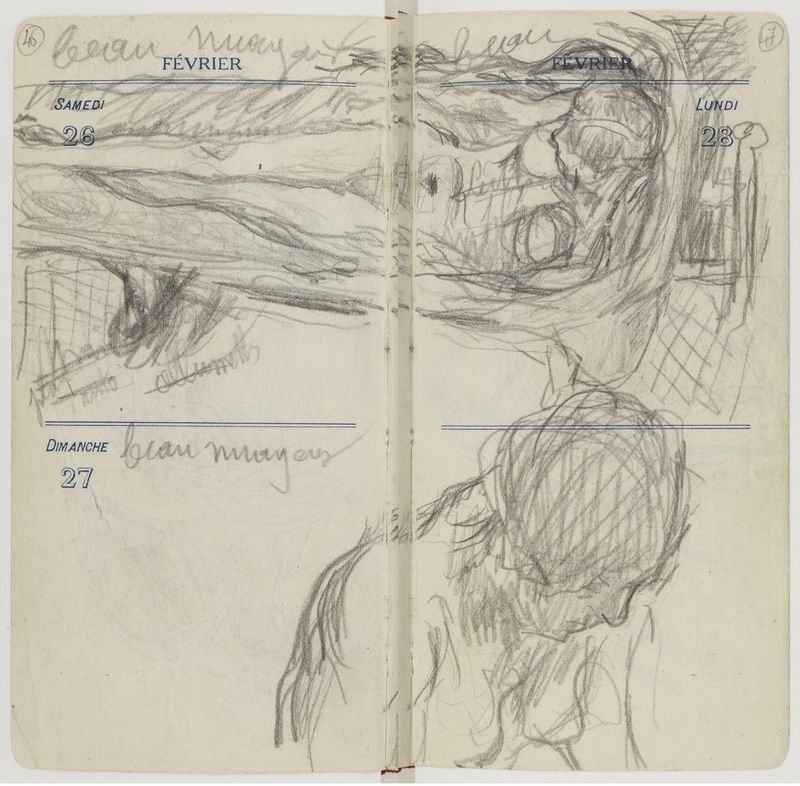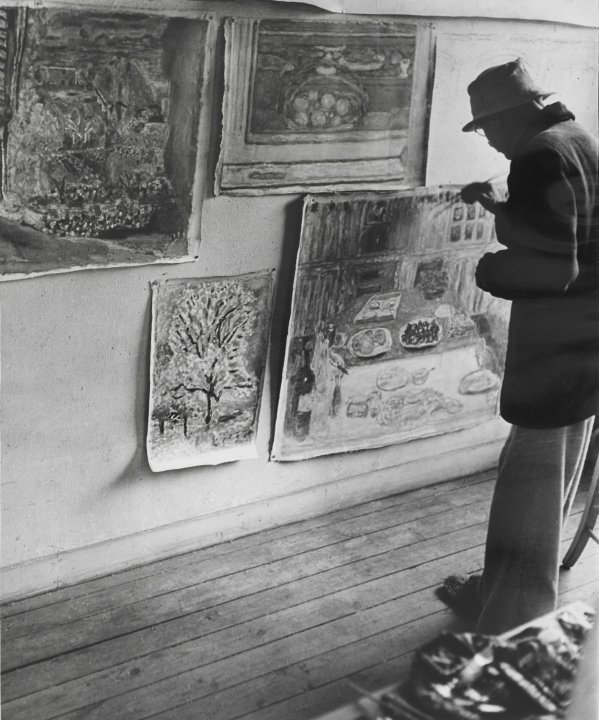In preparation for a show of new work called “Painted Drawings,” to be exhibited May 2022, I am experimenting with a new approach to my work. I am relying on my original drawings as the foundational blueprints of the creation of this new work.
“It is with drawing as it is with writing: when a child learns to write, it seems to him almost impossible that he will ever learn; nevertheless, in time every child learns. I really believe one must learn to draw so that it becomes as easy as writing.“ — Vincent Van Gogh
Drawings are often considered to be the most immediate route of expression of the artist. A line can say so much.
The line of a sketch or drawing has a unique quality of energy, of life, of freshness and intimacy. Here is a brief menu of terminology that explains the difference in how line is employed in drawing.
Terminology.
Sketch: a spontaneous and rough notation of a first idea.
Study: a more thoroughly worked out drawing.
Finished drawing: brings the elements of sketches and studies together.
Watercolor: Watercolors, though frequently used by fine artists, were generally considered a sketching medium - they were often called ‘drawings’ rather than ‘paintings.’
There are other elements that make a painting:
The choice of color, of shapes. Equally important is having a sense of passion about your subject matter. What is the story you want to tell with the composition?
Then there are the more subjective aspects of creating: memories, imagination, using association -- "something linked in memory or imagination with a thing or person." as described by Mirriam Webster.
Music tends to stimulate many of these sensations for me.
For this showing of work, I am finding that drawing + memory + association + music is how I am getting things done -- creating new work that has its own sense of uniqueness and individuality — inspired by a drawing.
Reading the Orchestra Score/The Composition Student. Sketch. 2020.
Some of the new works are based on a quick sketch. Take for example the painting “The Composition Student,” seen above. I made the preliminary sketch one day in 2020 before the onset of the pandemic when taking the light rail from the University of Washington to Capitol Hill in Seattle. The ride is maybe five minutes long. While on the train, I noticed to my right in the seat across the aisle, a person intensely focused on the composition score he was holding. Having studied flute in junior high, I knew he was looking at a conductor’s score as I noticed the page printed with the multiple musical instruments and the associated music to be played. I was watching him count the beats in each measure and then he would make a notation. Fascinating!
Example of a conductor’s score. A “score” a book that contains all of the music and information about the performance of a piece of music as intended by the composer. A conductor must study the score in depth in order to understand how the music is to be performed. The instruments and role of the performer is on the left. The music of that instrument is on the right. The conductor must simultaneously both read the score horizontally to follow the music as it is to be played as well as vertically to see what instrument is played and when. Additionally, the conductor rehearses the orchestra using the score. Interpreting the score and rehearsing the orchestra is a skill that requires years of training.
In translating the image from my drawing journal to canvas, I had another image in my mind of a painting I really like. John Singer Sargent’s “Rehearsal of the Pasdeloup Orchestra at the Cirque d'Hiver,” 1879–80. What I find interesting in this painting is the monochromatic study of light and dark values. One can sense the music being played in this painting.
John Singer Sargent.
“Rehearsal of the Pasdeloup Orchestra at the Cirque d'Hiver.” 1879–80.
“Sargent merges the visual and aural experience of the concert by eliminating anecdotal detail and using a grisaille palette to create a soft focus in the arena. The repetitive rectangles of the white sheet music and the glint of light on the musical instruments punctuate the composition.” —The Metropolitan Museum of Art, New York City
Édouard Manet
“Berthe Morisot with a Bouquet of Violets,” Oil on Canvas, 1872.
The French Impressionist painter Édouard Manet frequently used black as a dominant color in his compositions. In a sea of pastels and primaries, the palette used by the majority of the French Impressionists, Manet’s use of black really makes a statement on the canvas. Manet’s blacks are so rich and sumptuous. Thinking of Manet’s palette, I knew that I wanted to employ the use of black in my painting of “The Composition Student”—to be more exact, Payne’s Grey, which is a blackish blue, as a dominant hue in my painting. In this painting, I wanted a palette of black and white to read like a music score which is in black and white. Also, I had the images of the Sargent and Manet paintings in my mind — an example of association.
In 2018, I visited Paris. I spent a lot of time in Montmartre, walking, imagining the great Impressionist painters and writers and musicians that lived in this district back in the day, creating timeless works. One of those is the musician Erik Satie, a favorite of mine. I passed his home in Montmartre on the Rue Cortot, on the way to Sacré Cœur on thé top of the hill. Satie lived in this home from 1899-1898.
The music of the Impressionist/Post Impressionist/Expressionist era is also a factor in my work: notably, the work of the French composer Erik Satie. I first became enamored of the music of Satie when I heard his piano composition Gymnopedie No. 1 (1888) back in the mid 1980s. Interesting the music was already about one hundred years old at that time, yet so fresh and alive.
I was listening to an album of the works of Satie recently. I find the liner notes so interesting on record albums. Interestingly, one of the works performed is "Carnet d'Esquisses et de Croquis" (translation: notebook of sketches and rough drafts.) An “Esquisse” is a first draft, a rough sketch.
The following passage listed on the back of the LP very much speaks to the body of work I am developing:
“The music "takes us directly into the composer's workshop. Here are twenty fragments from different periods and in different styles, retrieved from Satie's papers. Some are mere notations; others have attained a degree of elaboration. There are chorales, exercises, Montmartre-inspired cabaret tunes, a polka, an air, a dance. Uncannily, each of them, whether elaborated or the simplest statement of an idea, is in itself a complete, seemingly finished thing. In performance, there is no feeling of scrappiness or of tentativeness. Together they present a fascinating collage of the composer at work, rather like a writer's journal in which he notates scenes and conversations for future use." — Liner notes, Piano music of Erik Satie, Vol. 5. performed by Aldo Ciccolini (1967.)
Sketch. “An Evening at Versailles.” Byron Schenkman is performing “Chaconne in D Minor,” on harpsichord composed by Élisabeth Jacquet de la Guerre, 17th century music from the court of Versailles. Performance March 2022, Epiphany Parish in Seattle.
A carnet of drawings. Sketches by Pierre Bonnard.
The Post-Impressionist painter Pierrre Bonnard often spent all day sketching.
He would make quick sketches of everyday life in his calendar book, accompanied with a word describing the color of the sky or the weather. Bonnard carefully guarded his drawings, as very few people would see them.
My drawing of Pierre Bonnard’s 1900 painting “The Artist Studio.” 2017.
Bonnard working on unstretched canvases in his studio.
Bonnard didn’t set out to create a draw anything in particular. His drawing journal captured familiar settings, favorite haunts, and he drew what captured his attention in the moment. After drawing all day, he would then begin the work of creating a painting. His paintings are usually about a particular moment — “The work of art — a stop of time’",” he wrote in a diary. Bonnard’s sketches were recorded on anything at hand, a calendar, a small notebook. Holding the stub of a pencil in his hands, he would make quick sketches of everyday life in his calendar book, accompanied with a word describing the color of the sky or the weather. Bonnard would often make a succession of sketches of the same setting.
Later, he would then use these sketches as the basis of fanciful compositions on unstretched canvas utilizing his drawings and his memory that would take him months if not years to record “a stop in time.”
A picture I took of one of Bonnard’s works that was on display at the Seattle Art Museum in 2017.
In becoming a painting, there are layers of sensations and impulses to navigate. Perhaps in the end, becoming a painting is really what wants to emerge from the spirit of the artwork itself. The artist is but a medium to help bring out the essence of the formless into form.
Mary Lamery is a lifelong resident of Seattle, Washington, USA and native of the Pacific Northwest.
Lamery paints regional landscape and makes drawings in a manner that leans towards 19th century French Impressionism.
Her landscapes and drawings invite the viewer to add to the backstory of the composition through personal identification with the paintings and story telling of the experience.
Mary’s drawings and paintings are featured in the upcoming exhibit “Painted Drawings” May 2022, Fairmont Olympic Hotel, Seattle.












